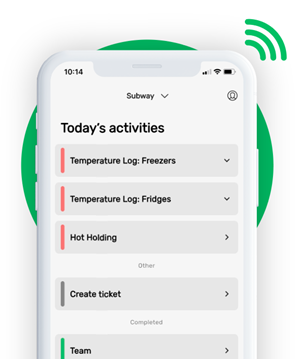FOOD FLOW CHART TEMPLATE FOR FREE
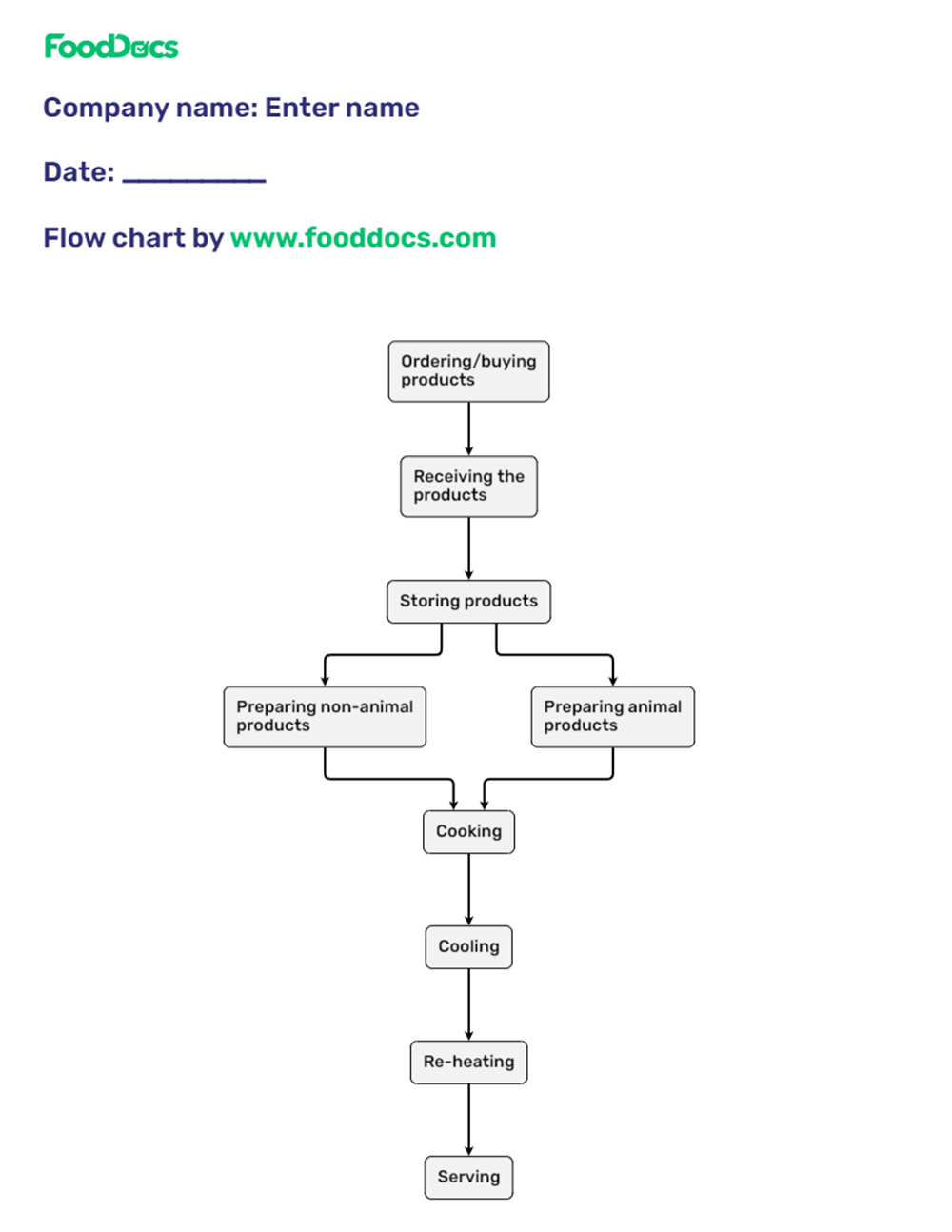

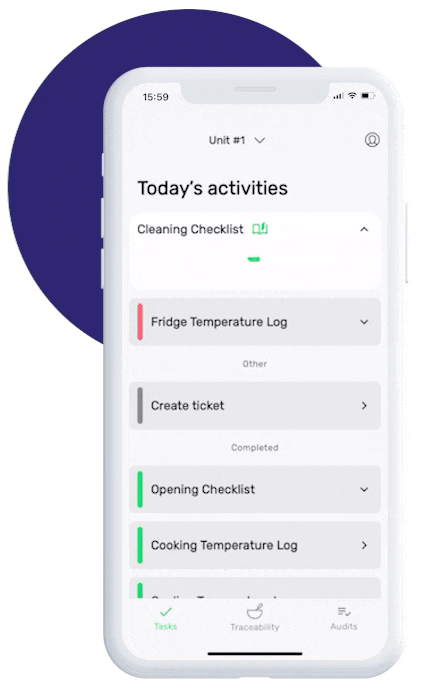
This is how our Digital Food Safety platform saves 20% of your time on daily tasks:
- Get upcoming task notifications
- Add data into the app
- Check the status of tasks in real-time

When food safety was still handled on paper, I typically spent a couple of hours per day getting the papers and going around checking or completing tasks… Now I can sit down and it's just all there in one place. It takes me 5-10 minutes.
Ruth B.
Store Manager
Key points from this article
- A HACCP flow chart represents the entire process categories that your raw material goes through during processing until the product is served to the customer.
- It's one of the preliminary steps in making a HACCP food safety management system.
-
All food flow charts are almost different and have complex processes. They are uniquely based on your processing structure.
- Depending on the complexity of your whole processing steps, your food flow chart may become difficult to make.
- Complete flow diagrams are composed of flow chart symbols which are usually basic flow chart shapes.
- A customizable food flow chart template outlines steps from raw material sourcing to final delivery, highlighting critical control points (CCPs) and helping identify potential hazards.
- Four benefits of of a customizable food flow chart are enhanced food safety, improved training, regulatory compliance, and flexibility.
-
FoodDocs digitizes food safety, including necessary Flow Chart documentation required for compliance.
What is a food flow chart?
In the food industry, a HACCP flow chart represents the entire process categories that your raw material goes through during processing until the product is served to the customer. It is your business's design workflow and is a fundamental requirement of a HACCP plan.
All steps in your production process must be well-emphasized in this simple outline so that the whole HACCP employee will be able to evaluate each step comprehensively to prevent loss of control and consistently produce a safe product.
As such, staff from all concerned departments must participate in making it, including the assistant manager, the food safety specialist in the business, operations manager, head of kitchen staff, and food engineers. Any type of food business, including fast-food restaurants, retail food stores, and food courts, need to create a food flow chart.
A HACCP food flow chart or a commodity flow diagram is one of the preliminary steps in making a HACCP food safety management system. In a way, it is the workflow diagram or business process diagram of your food business.
This document must represent your food processing operations well for all the food prep team members as well as for the food safety auditor during an evaluation. It serves as a basis for the next steps of the HACCP food safety management system making such as establishing critical limits, corrective actions, monitoring records, and preventive controls.
Missing just one food operation in a HACCP flowchart diagram can increase the risk of food safety hazards in your food business and risks the successful implementation of your HACCP plan. This instance shows you the ability of flow charts to clearly display all the needed information for your business.
The list food service operations that must be included in the flow chart include:
- Incoming materials
- Inspection (for any type of food safety hazard)
- Batch weighing
- Processing (e.g. thermal processing, mechanical processing, etc)
- Packaging
- Quality inspections
- Rework (where applicable)
- Waste flow
- End product
All food charts are almost different and have complex processes. They are uniquely based on your processing structure.
Depending on the complexity of your whole processing steps, your food flow chart may become difficult to make. Complete flow diagrams are composed of flow chart symbols which are usually basic flow chart shapes.
These symbols can include a rounded rectangle shape that contains the process, inward and outward arrows to suggest the flow of the process, diamonds for steps requiring decisions, and circles that indicate the starting and ending point.
Other flow chart symbols may include curved lines, connector lines, and other basic shape objects such as rhomboid shapes to signify input materials. The whole flow chart design does not have to be as technical as an engineering drawing.
Why do we need to understand the flow of food definition?
The flow of food in a processing setup pertains to the path that the raw materials go through to become the finished product that is ready to be served. It is a descriptive document of your restaurant operations plan and product flow. Determining this whole process of product flow is an important job for the whole HACCP team to prevent loss of control of food safety and to make your food safer.
Each step in your food manufacturing process has its functions. Whether it may be receiving raw materials, processing, packaging, or anything in between, all of these steps were included to perform certain tasks. Knowing the logical flow of foods through the assembly line manufacturing allows your HACCP team to see what food safety risks and potential hazards may have a high chance of occurring.
The flow of food normally starts from receiving the raw materials which then go straight to manufacturing or ingredient storage. Direct use of raw materials requires extensive inspection because the products will be immediately used for a food process operation.
As an example, a physical hazard in raw material production is most likely to be detected such as insect parts, glass shards, or pieces of metal.
Failure to detect these potential hazards at this point can cause other subsequent contaminations such as the growth of enteric pathogens and other biological hazards and create unsafe food for consumption that can put public health at risk.
What is a customizable food flow chart template?
A customizable food flow chart template is a tool that maps each stage of your food production or handling process. It outlines steps from raw material sourcing to final delivery, highlighting critical control points (CCPs) and helping identify potential hazards.
This template allows for tailored modifications to meet the unique needs of your food business, whether you manage a restaurant, processing facility, or catering service.
Who needs a customizable food flow chart template?
Any food business focused on maintaining high safety standards should use a customizable food flow chart. This includes restaurants, manufacturers, and distributors who need to document each stage of food preparation to manage safety risks effectively. By using a customizable template, businesses can adapt to changing processes or menu items while ensuring regulatory compliance and safety.
What are the benefits of a customizable food flow chart template?
A customizable food flow chart template provides several benefits:
- Enhanced food safety: Clearly defined steps and CCPs help prevent contamination risks.
- Improved training: New staff can quickly learn and follow the process, ensuring consistency and quality.
- Regulatory compliance: Documented procedures demonstrate adherence to food safety regulations, supporting audits and inspections.
- Built-in flexibility: Easily update the chart as processes or suppliers change without starting from scratch.
How to use this customizable food flow chart template for your food business
- Outline each process stage: List every step from receiving raw materials to serving or packaging.
- Identify hazards: Recognize potential hazards at each step, such as biological, chemical, or physical contaminants.
- Define CCPs: Mark critical control points to monitor for safety and compliance.
- Adjust as needed: Modify the template to align with changes in processes, products, or regulations.
How FoodDocs can make using a food flow chart even easier
FoodDocs digitizes food safety for every critical area of a food business's Monitoring and Traceability systems. It also automatically creates a HACCP plan (as well as any other compliance standards) in less than an hour, which includes a Flow Chart.
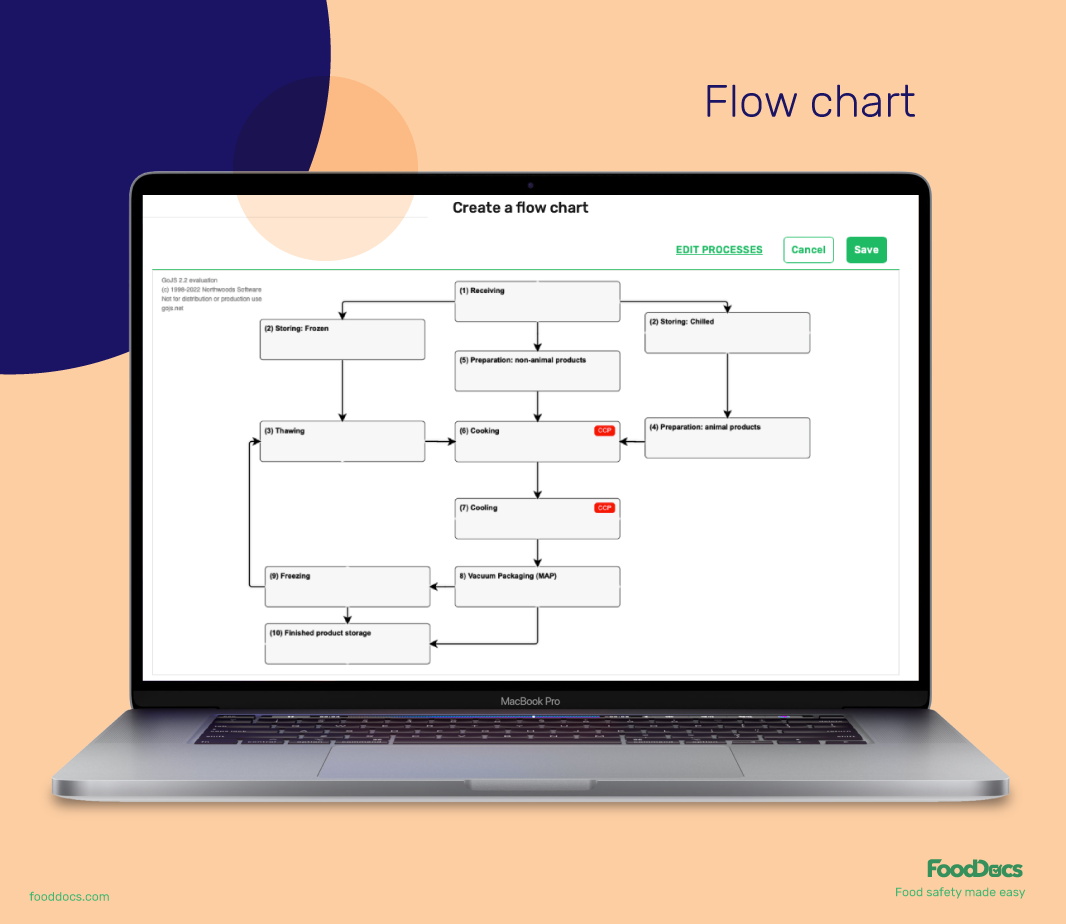
With FoodDocs, you can:
- Easily customize it according to your business when needed. All you've got to do is drag and drop the boxes to the required locations and change the content accordingly.
- Create an unlimited number of flow charts based on your various product groups (e.g., main courses, desserts, marinated products, etc.).
And with the mobile app, team members will receive smart notifications so that staff never forget a task related to your food flow process.
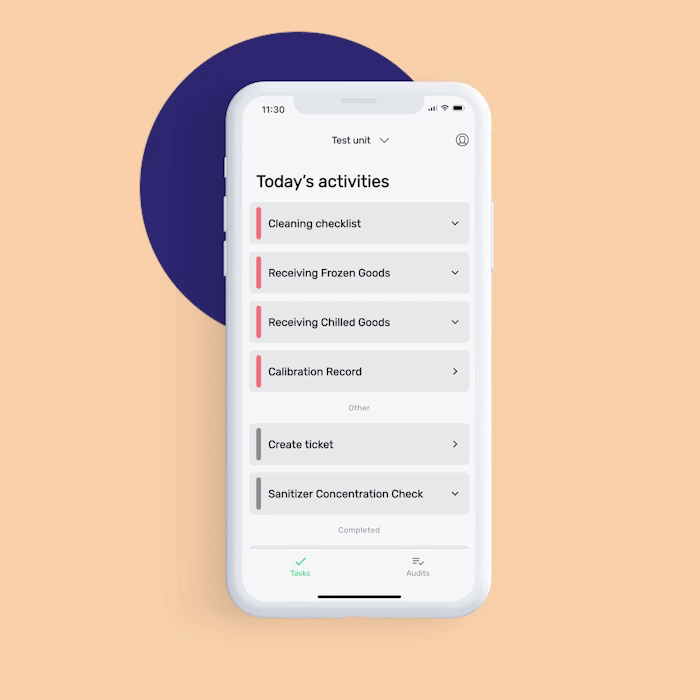
This reduces the administrative burden while ensuring compliance and maintaining high food safety standards in your facility.
